How Much Should I Be Feeding My Chickens?
Saturday, February 27, 2021
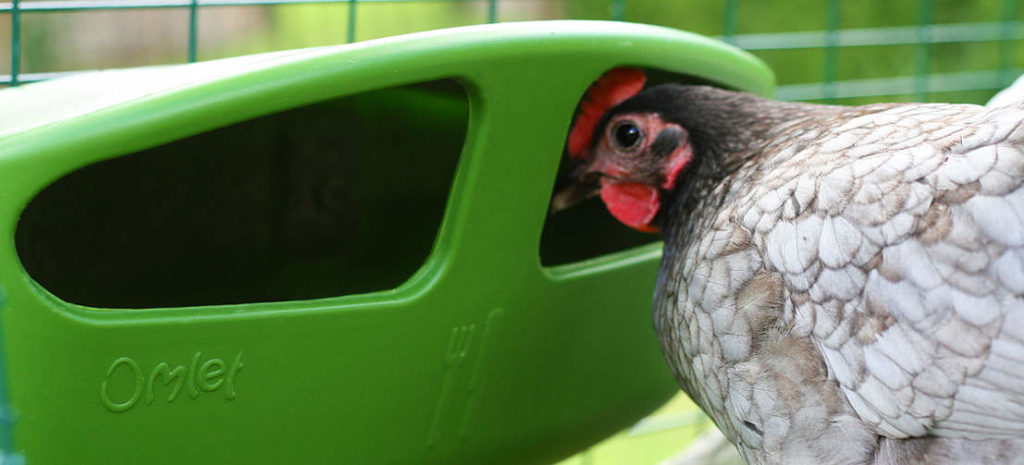
Feeding Habits
Chickens are great foragers, and free-range hens will peck and scratch for all kinds of wild treats from grass and weeds to worms and beetles. However, even a hen with all-day access to a garden or paddock still needs to be fed with high-quality layers pellets. These contain the correct balance of protein, carbohydrate, vitamins and minerals (notably calcium for egg shells) that will keep them happy and healthy and in peak condition to lay. Protein is particularly important for healthy egg production.
A general ballpark figure is particularly useful to guarantee that the hen's dietary requirements are being met. For medium-sized breeds such as the Rhode Island Red or Light Sussex and all Commercial Hybrids (Brown Shavers and Hyline Browns), you need to feed around 120 to 140 grams of feed per chicken per day, which is 840 to 980 grams of feed per chicken per week. A slightly larger Orpington or Plymouth Rock will eat a bit more, and the smaller Araucana will eat slightly less, while a small bantam breed will only eat between a half and three quarters of that amount.
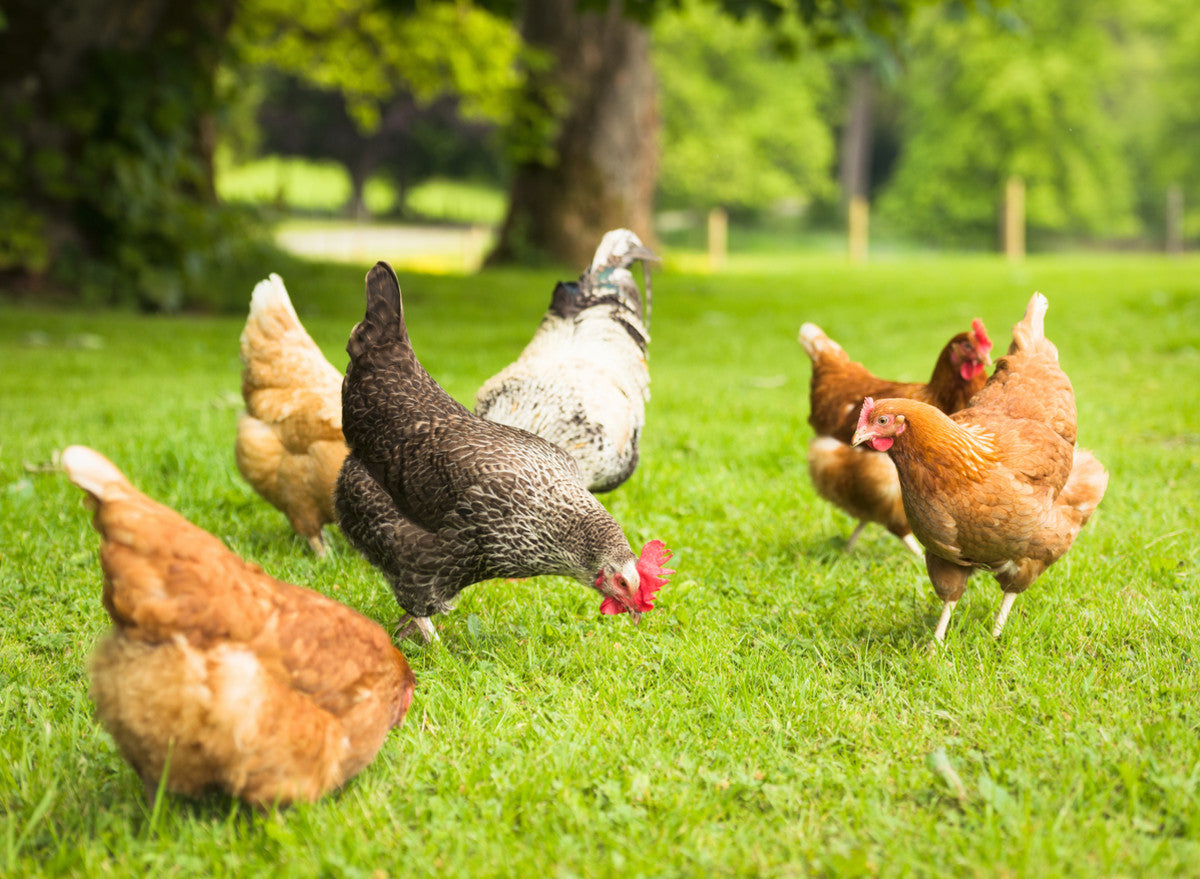
Recommended Feeding Guide: 120 to 140g per day per hen

Chicks, Pullets and Layers
- Until it is eight weeks old a chick will need to be feed on a protein-rich chick crumble (chick starter). Chick Starter usually contains a crude protein percentage of around 20%. Make sure the proteins are from naturally occurring ruminant proteins (blood, meat and bone meal). Most chick starters contain a coccidiostat at low levels which helps to avoid coccidiosis outbreaks which can be fatal.
- Between 8 and 18 weeks when pullets are growing we recommend keeping them on the high protein chick crumble to grow good, strong birds. The other option is to move them over onto a grower pellet (less protein no added calcium no coccidiostat)
- As soon as the hens start to laying (Point of Lay), they require layers pellets. These, again, are rich in protein, calcium and all the other essential nutrients. Stick with a premium, high quality pellet with a crude protein percentage of 17-18% and naturally occurring ruminant proteins. Look for blood, meat and bone meal on the label. The hens will also need daily access to grit. Treats are fine, as long as they are not being offered so frequently that the hens fail to eat their share of pellets. Corn is a healthy treat, and birds that have free-range access to grass (fresh greens) will be in chicken heaven.
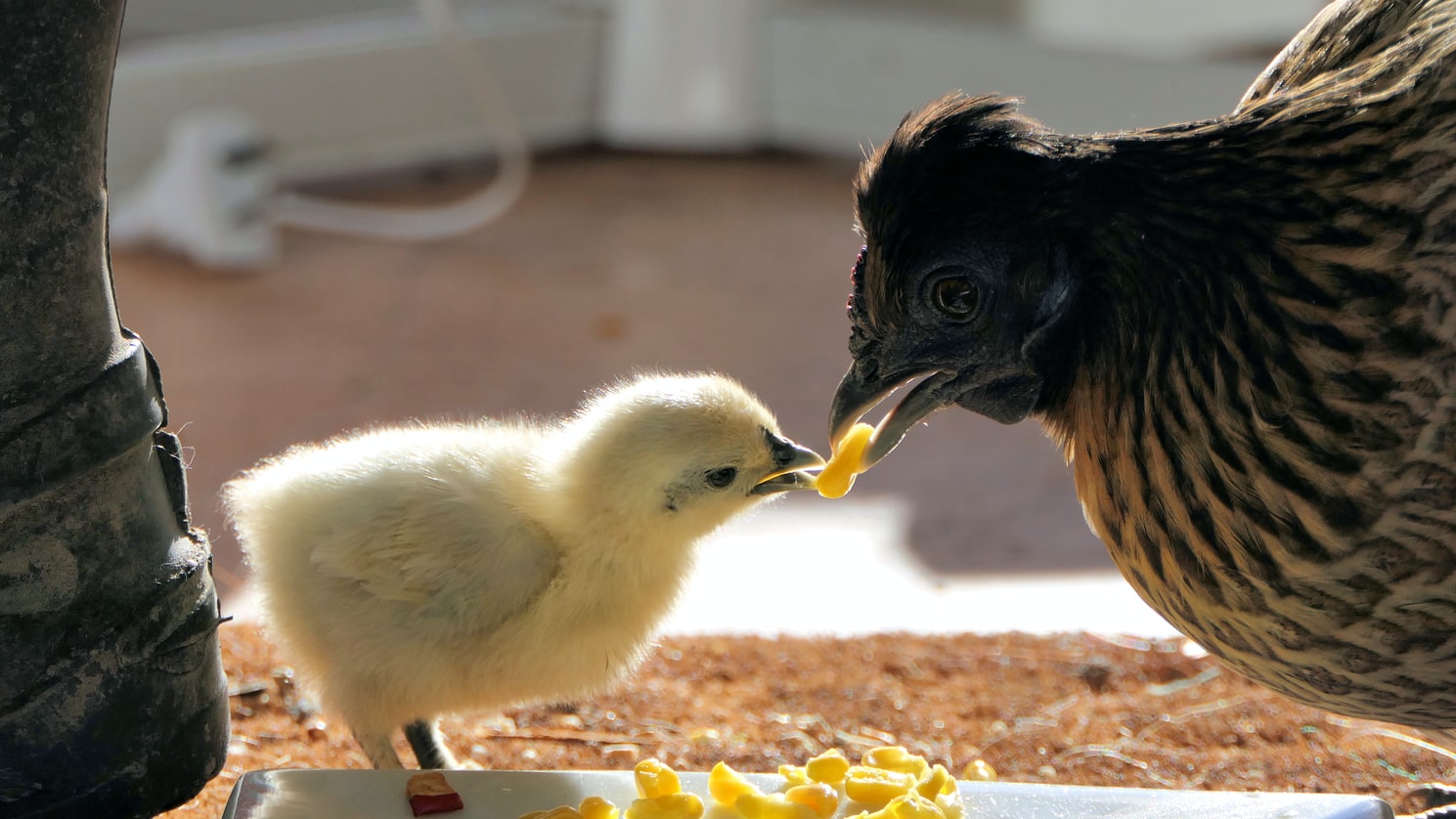
Chicks
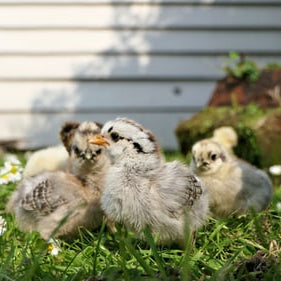
- day old to 8 weeks
- day old to 8 weeks high protein chick starter
- high protein chick starter
- adlib feeding
- use chick feeders
- do not feed layer feed (contains too much calcium)
Young Pullets
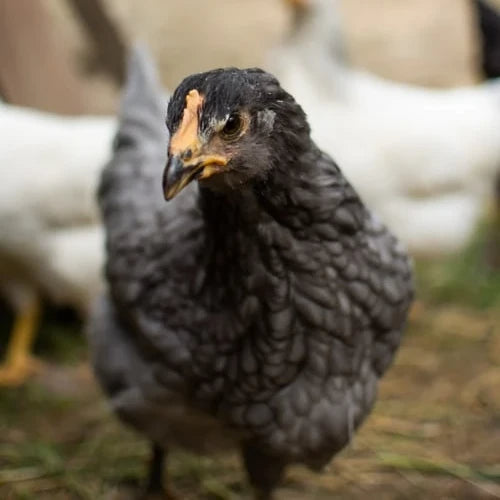
- 8 weeks to 18 weeks
- adlib feeding in suspension feeder
- chick starter crumble or grower pellets
- do not feed layer feed (too much calcium)
- start auto feeder training at 16/18 weeks
Laying Hens
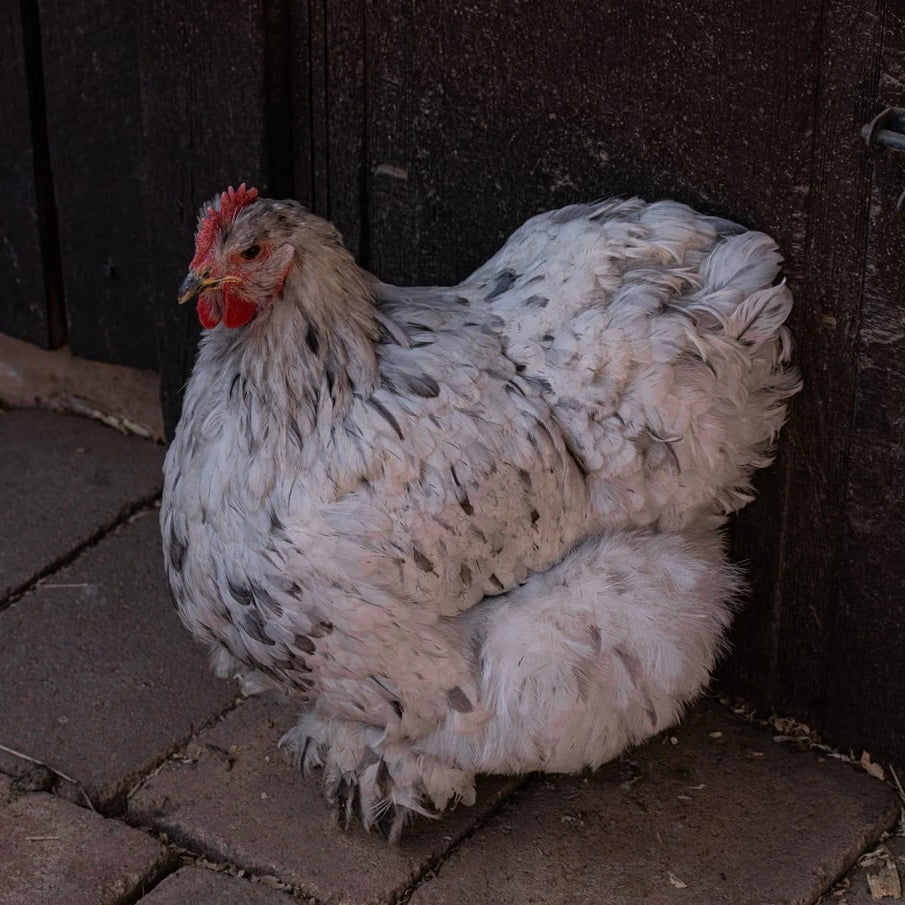
- POL to mix aged
- premium layer feed containing 17-18% crude proteins
- shell grit separately
- feed layer feed all year round
- feed on demand with a self feeder
- access to greens/free-range
Remember: What you put in is what you get out! 🥚🥚🥚
How Can You Make Sure Each Hen is Getting Her Share of the Food?
Any flock of chickens develop a natural pecking order, and the dominant birds will tend to eat their fill before the others, if there is not enough space for all the hens to fill their crops at once (something they like doing shortly before retiring for the night). A solution here is to buy a wide-bottomed feeder that allows several birds to eat at once, or to use more than one feeder. This will ensure the timid hens get their fair share of food. However, as long as you have provided enough for all your hens, there should always be food left in the feeder when the dominant birds have had their fill. You should always keep a close eye on the health of your flock. Issues such as soft shells or feather-plucking can be signs of dietary deficiencies, and the problem might lie in the quality rather than the quantity of the birds diet.
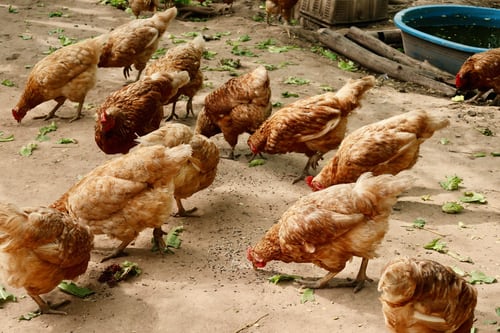
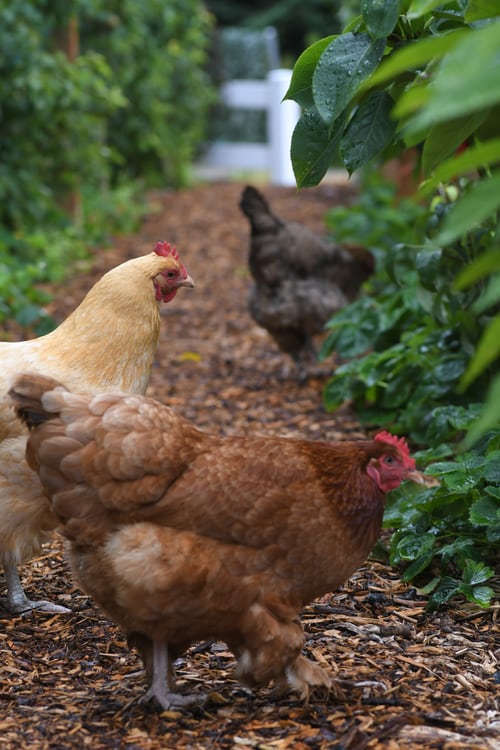
Do Hens Eat the Same Food All Year Round?
Chickens moult each year, and will usually eat more food during this process, to ensure their bodies have all the protein they need to grow a new set of feathers. Hens do not lay when they’re moulting as the protein demand is exceptionally high and protein goes into feather growth rather than egg production. Hens usually eat more during cold weather too, to fuel their metabolisms and stay warm. Free-range hens also tend not to find as many treats in the garden during the winter, as the insect population is at low ebb and the grass is no longer growing. You can add a little more food each day during these periods. You will soon know if you are giving them too much or too little, by noting the amount of pellets left in the feeder each evening. However, the hens produce fewer eggs in the winter, so all in all the amount of protein-rich pellets required does not differ significantly from season to season. Again, the key detail is to ensure a regular supply of food. In the summer, if your hens appear to be eating very little, it may be because they are finding too many good things on their foraging trips in the garden. This can be a problem if the wild food they are filling up on doesn’t provide the right balance of nutrients. You might want to confine a hen to the coop if she doesn’t seem to eat enough pellets. That way, she will be forced to eat the good stuff rather than the garden treats.

What Type of Feeder is Best?
Layers pellets should be available to your hens throughout the day – they will eat as much as they need, and will not behave like a dog, eating everything at once simply because it’s there!
We recommend auto feeders that allow hens to access feed on demand.
These are brilliant.👍
They will also save you time and money!

Appletons Best Selling Auto Feeders
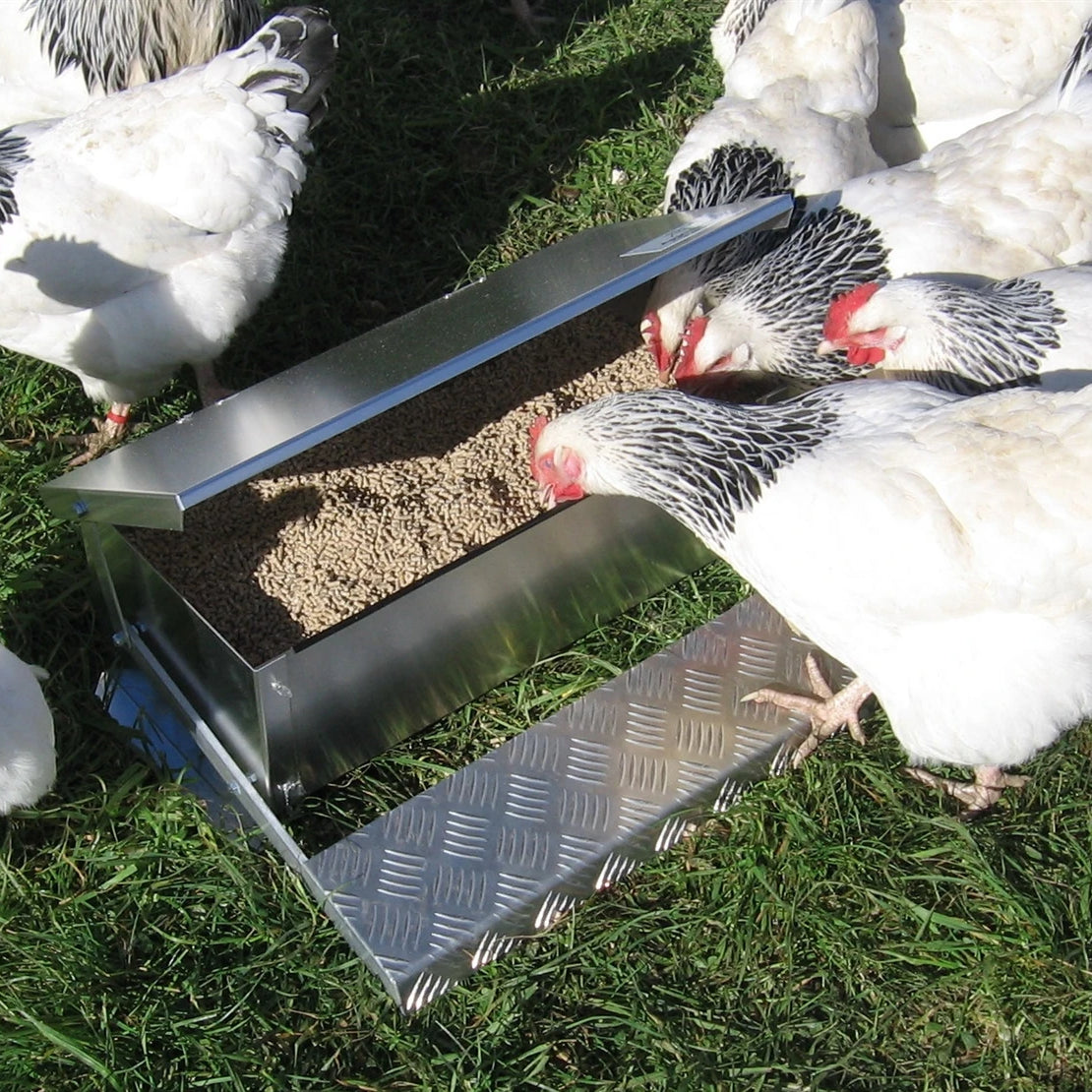
Large Step On Feeder 12kg 👍
This brilliant step-on chicken feeder holds a decent amount of feed - 12kg.
Ideal if you have 4 or more hens or only top up your feeder weekly.
Perfect if you have a small to medium sized flock and enjoy going away for an occasional weekend as the chooks will have access to feed 24/7.
Vermin proof - feed stays clean.
Can sit in the hen house or outside.
Best to train pullets from POL onwards.
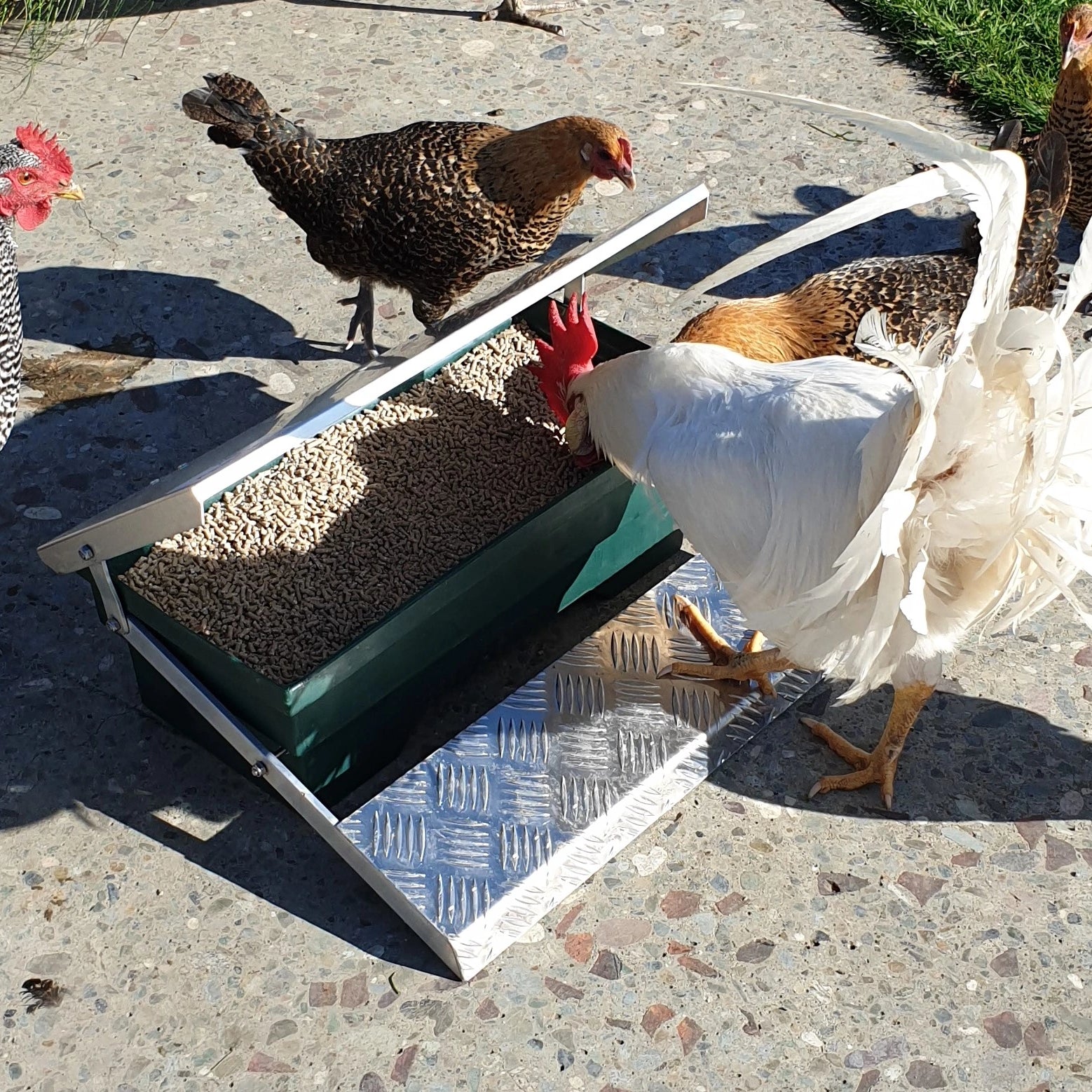
Premier Step On Feeder 9kg 👍
Like the Large Step On Feeder this auto feeder is a perfect size for a small to medium flock of hens. Only difference is that it has a heavy duty plastic base and height of the feed box is a little lower than the large feeder. Holds 9kgs. Good length at the front allows two to four hens to feed at the same time.
Vermin proof - feed stays clean.
Happily sit inside or outside in the run.
.Best to train pullets from POL onwards.

Mini Step On Feeder 6kg 👍
This mini version is half the size of the Large Step On Feeder and holds 6 kgs of feed.
Perfect if you have a small flock of 3 or 4 hens and are comprised for space in your poultry run. Ideal for using in Eglu Cube Chicken Coops.
If using on the grass or for regular moving we recommend mounting on piece of plywood. Vermin proof. Can sit inside or outside.
Best to train pullets from POL onwards.
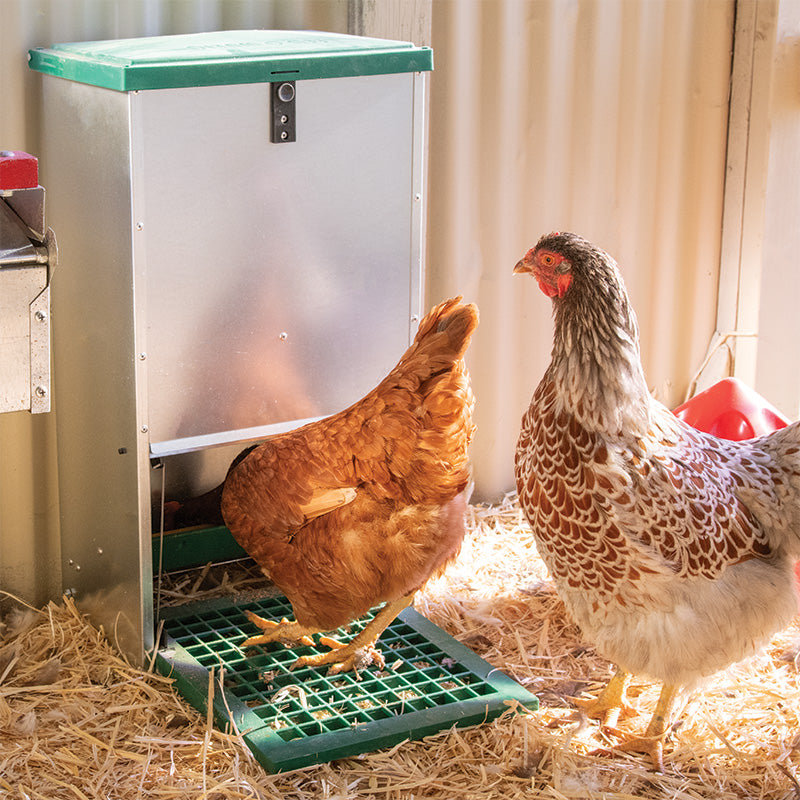
Feed-o-Matic Treadle Feeder 5kg, 8kg, 12kg & 20kg 👍
This european range of auto feeders works on a hopper style system. Feed moves into the trough through a narrow slot at the base. Hens peck feed out from the bottom of the trough once they step on the green treadle. Does a brilliant job at keeping the sparrows and mice out but, in our opinion, is not 100% rat proof. Best used under cover - in your hen house or under shelter. Can be used for perching pullets and older.
Shop nowAppletons Recommendations

Don't throw feed directly on ground 🚫
There are many reasons not to feed your hens by throwing their feed directly on the ground. Hens at the top of the pecking order (bossy hens) eat first and chase lower ranking hens away. Hens have to compete with sparrows for feed. Any leftovers are cleaned up by wild birds and vermin. A good percentage of feed is wasted. Feed also becomes contaminated with a greater chance of introducing disease to your flock. Feeding once or twice a day is not ideal. Hens eat little and often from dawn to dusk - they are by nature 'foragers'.
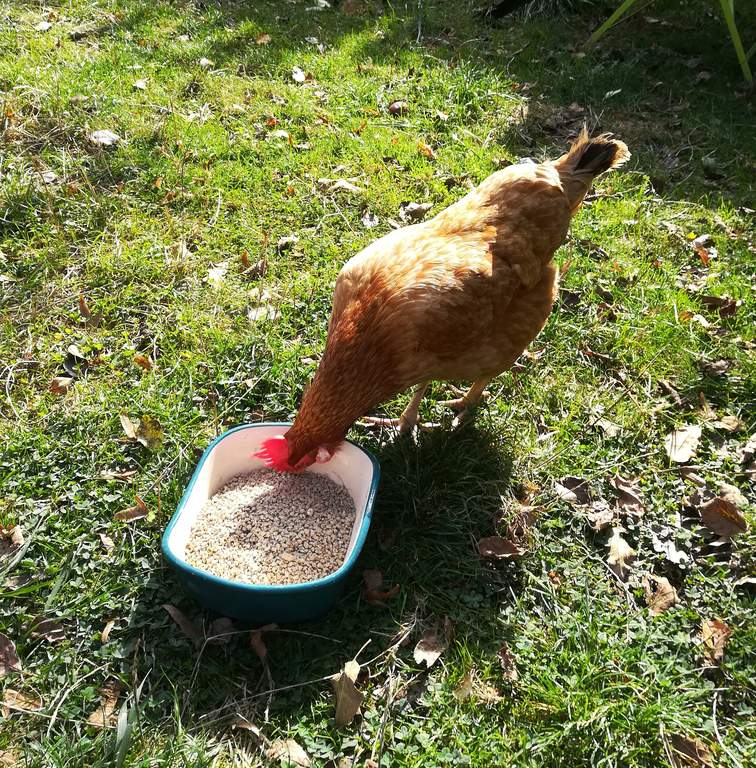
Avoid feeding out of open containers 🚫
Open containers like bowls, baking trays, pans and feed troughs are not ideal for feeding poultry.
Hens will scratch out and waste much of the pellets and the sparrows and wild birds easily make a meal of the rest. Invest in a purpose-built feeder. This will save you time and money in the long run!
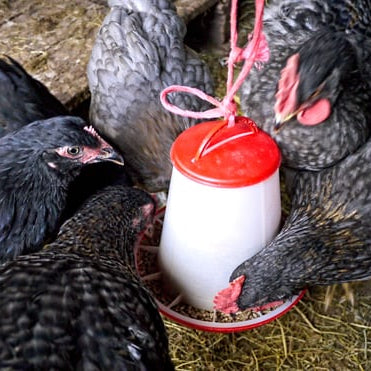
Do use suspension feeders with anti-scratch fins ✔️
Anti-scratch fins are worth having on poultry suspension feeders. Hang these feeders up off the ground and out of the wood shavings. Raise them off the ground so hens cannot scratch feed out and flick wood shavings in. A hanging suspension feeder does a great job of containing the feed, keeps it off the floor and out of the wood shavings. Hens know where it is and access is easy. Keep these open feeders undercover and dry and in poultry runs that are fully enclosed. (no wild birds can get)

Do supply clean fresh water at all times ✔️
To have happy, healthy and laying hens fresh, clean water available at all times is essential. Invest in a good quality drinker that will hold a large amount of water. Access to water is more important than feed. If the go without water, even for a short while, it will interfere with their laying.
Remember Treats are Like LOLLIES!
Treats are essentially 'fillers'.
Excellent crop fillers before roosting for the night;
or bonding/fun time with you (their flock owner/s)
or make a great 'calling-back-to-coop' mechanism when you need it.
Treats like maize (corn), wheat (grains) and Topflite Scratch & Lay are perfect treat feeds for these options.
A cup or handful at a time.
Keep a premium layer feed in your auto feeder at all times.
